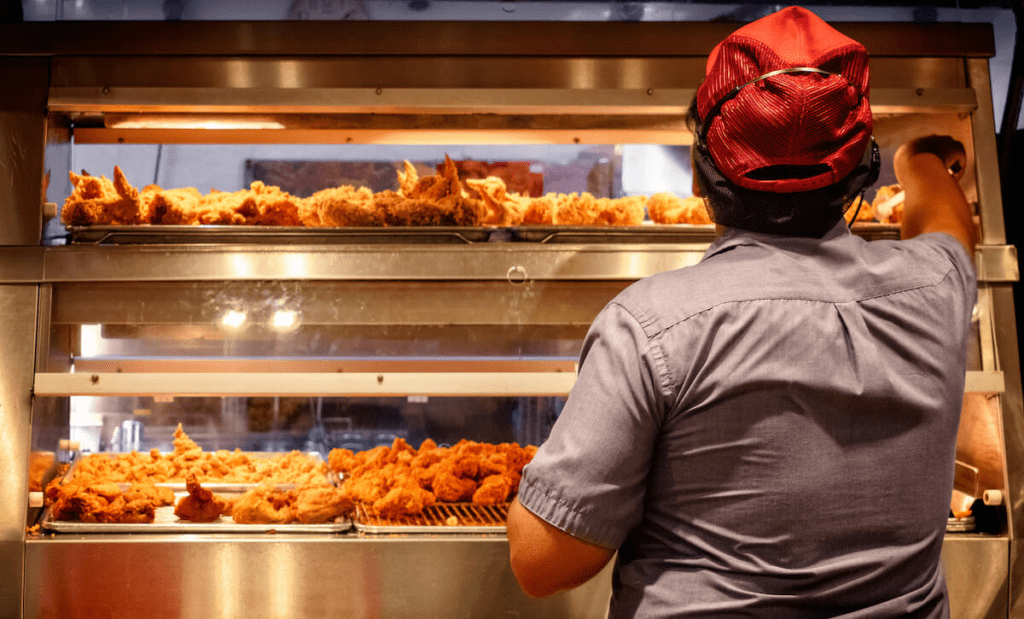Key Takeaways:
Excessive employee turnover is the bane of any business, and with the national labor shortage swiftly approaching critical mass, employee retention is perhaps more important than ever.
Although food service is an industry where high turnover is simply the nature of the beast, labor shortages of this scale are virtually unprecedented. And given that restaurants, like many other businesses, are still grappling with the financial fallout of the COVID-19 pandemic, this employee turnover conundrum could truly not have come at a worse time.
That said, an unsustainable employee turnover rate is an obstacle that can be successfully navigated. In addition to conventional employee retention strategies, restaurants also have emerging artificial intelligence (AI) technologies at their disposal. This technology offers incredible potential for improving restaurant service standards and reducing staff turnover.
In this article, we’ll go over smart strategies you can implement in your restaurant to improve employee turnover rates.

The Great Resignation and the accompanying jump in employee turnover rates have hit the food service sector even harder than most other industries. Although there have been some early signs of recovery, including a slight dip in the unemployment rate to 7.5%, restaurants still have a tall hill to climb just to return to pre-COVID employment levels.
September 2021 saw the creation of only 29,000 new food and beverage jobs, far fewer than industry insiders had hoped for. Owners significantly increased workers’ wages, with average food service pay rates now exceeding $15 per hour for the first time in national history. But even this has failed to totally solve the restaurant labor shortage.
High employee turnover can be caused by a number of factors, and the reality is that even competitive compensation won’t necessarily atone for a generally negative employee experience.
BambooHR defines employee turnover as the number of employees who exit a job within a given period of time, e.g., monthly turnover. It’s also important to distinguish between voluntary turnover—an employee leaves their job of their own accord—versus involuntary turnover, which refers to employee termination.
Here are some common reasons for high employee turnover:

Despite metrics from the early days of 2022 indicating a slow upwards trend in restaurant employment growth, the unemployment rate is still 8.2%. This is far higher than the national average of 4%. A full economic recovery is still in the cards, but it appears to be a long way off.
The consequences of a high annual turnover rate go beyond the obvious outcomes like short-staffing. Employee turnover can reduce profit margins and add additional financial pressure to an already struggling restaurant.
Employee attrition requires businesses to allocate resources towards all stages of the hiring process. This includes paying third-party job boards to host job descriptions for available roles, paying recruitment costs, and training and onboarding new employees.
Moreover, a high turnover rate also means that there will nearly always be at least one new staff member working a shift. Inexperienced team members may struggle on the job, leaving the veterans responsible for picking up the slack. This, in turn, creates a stressful, frenetic work environment, as well as likely diminishing the restaurant’s service standards.
Restaurants can meet and even surpass their expected employee retention benchmarks with a variety of different tactics. High levels of employee engagement and a supportive, respectful workplace culture will limit voluntary turnover, while improved recruitment and hiring practices will limit the necessity for layoffs.
Burnout due to overwork and job stress is one of the top reasons behind employee turnover. Augment your workforce with state-of-the-art restaurant AI equipment in order to shift some of the burdens off your team members.

Restaurant AI can indirectly reduce employee turnover by alleviating the strain on team members at short-staffed restaurants. For example, unfilled job openings or absenteeism might obligate an expediter to fill in at the front counter or to take phone orders. Overwork and general job stress of this nature are some of the leading causes of employee turnover.
Although the initial investment in AI technology might seem too costly, especially to restaurants already in the red, AI ordering assistants will soon pay for themselves. Powered by machine learning and natural language processing, virtual ordering assistants provide guest-centric, personalized service and have been shown to increase average ticket sizes and same-store sales, therefore bolstering a restaurant’s bottom line.
Limiting employee turnover is far from the only benefit this technology provides. AI voice ordering assistants can take orders across all channels, leaving the rest of the staff free to focus on food preparation or other tasks. Versed in multiple languages, AI voice ordering assistants accurately process guest orders in real time.
Restaurant AI voice ordering platforms are highly versatile, as they can be seamlessly integrated with any ordering format. Front-of-house self-service kiosks, drive-thru ordering terminals and phone systems all can utilize voice AI to record and transmit diner orders. Additionally, AI voice ordering assistants call upon past experiences and context clues to successfully upsell menu items through personalized recommendations.

The COVID-19 pandemic disrupted the food service industry in ways few could have predicted. Employee turnover is at an all-time high, the pandemic forced many restaurants to close their doors and the ongoing labor shortage shows little sign of abating.
Nevertheless, there is hope on the horizon. In addition to limiting employee turnover through traditional methods, restaurant AI virtual ordering assistants can fill in the gaps and relieve overworked employees. Not only that, but voice AI has a proven track record of improving order accuracy, increasing revenue and speeding up service time while still maintaining quality.
ConverseNow’s industry-leading restaurant AI technology offers limitless potential for revenue growth and improved customer service standards. Head to ConverseNow.ai to book a demo.